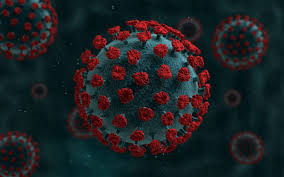Covid-19 lockdowns and other restrictions have badly disrupted HIV testing in many countries and this has led to steep drops in HIV diagnoses, referrals to care services and HIV treatment initiations, a United Nations Programme on HIV/AIDS (UNAIDS) report has revealed.
The report, titled “Confronting Inequalities: Lessons for pandemic responses from 40 years of AIDS” indicated that people living with HIV are more vulnerable to Covid-19, but that widening inequalities are preventing them from accessing Covid-19 vaccines and HIV services.
“Studies from England and South Africa have found that the risk of dying from Covid-19 among people living with HIV was double that of the general population. In sub-Saharan Africa, which is home to two thirds (67%) of people living with HIV, less than 3% had received at least one dose of a COVID-19 vaccine by July 2021. At the same time, HIV prevention and treatment services are eluding key populations, as well as children and adolescents,” read the report.
UNAIDS said Covid-19 vaccines could save millions of lives in the developing world but are being kept out of reach as rich countries and corporations hold on tightly to the monopoly of production and delivery of supplies for profit.
“This is having a severe impact around the world as health systems in developing countries become overwhelmed, such as in Uganda, where football stadiums are being turned into makeshift hospitals.”
UNAIDS executive director Winnie Byanyima added that “We have failed to learn the lessons of HIV when millions were denied life-saving medicines and died because of inequalities in access. This is totally unacceptable.”
The report also indicated that in 2020 the 1.5 million new HIV infections were predominantly among key populations and their sexual partners.
“People who inject drugs, transgender women, sex workers and gay men and other men who have sex with men, and the sexual partners of these key populations, accounted for 65% of HIV infections globally in 2020. Key populations accounted for 93% of new HIV infections outside of sub-Saharan Africa, and 35% within sub-Saharan Africa. However, they remain marginalized and largely out of reach of HIV services in most countries,” read the report.
The report also indicated that many of the 19 countries that achieved the 90–90–90 targets by 2020 have been leaders in differentiated service delivery, where facility-based services are complemented by community-led services.
In addition, the UNAIDS report said there are still larger gaps in service provision for children than for adults.
“HIV testing and treatment has been scaled up massively over the past 20 years. Some 27.4 million of the 37.7 million people living with HIV were on treatment in 2020. However, gaps in service provision are much larger for children than for adults,” said UNAIDS.
“In 2020, around 800 000 children aged 0–14 years who were living with HIV were not on HIV treatment. Treatment coverage was 74% for adults but just 54% for children in 2020. Many children were not tested for HIV at birth and remain unaware of their HIV status, making finding them and bringing them into care a major challenge,” they said.
The report also indicated that women and girls continue to be at a higher risk of HIV infection, with gender inequality and gender-based violence at the centre of that risk.
“Gender inequalities and gender-based violence rob women and girls of their fundamental human rights, including the right to education, health and economic opportunities. This increases their risk of HIV infection and blocks access to services. In sub-Saharan Africa, adolescent girls and young women account for 25% of all new HIV infections despite representing just 10% of the population,” said UNAIDS.
“Poverty and lack of schooling are also formidable barriers to health and HIV services. The report shows how family planning services for women and voluntary medical male circumcision for men and boys are much less likely to be accessed by people living in poverty. In 2020, the number of voluntary medical male circumcisions dropped by more than 30% in 15 priority countries in eastern and southern Africa.”

